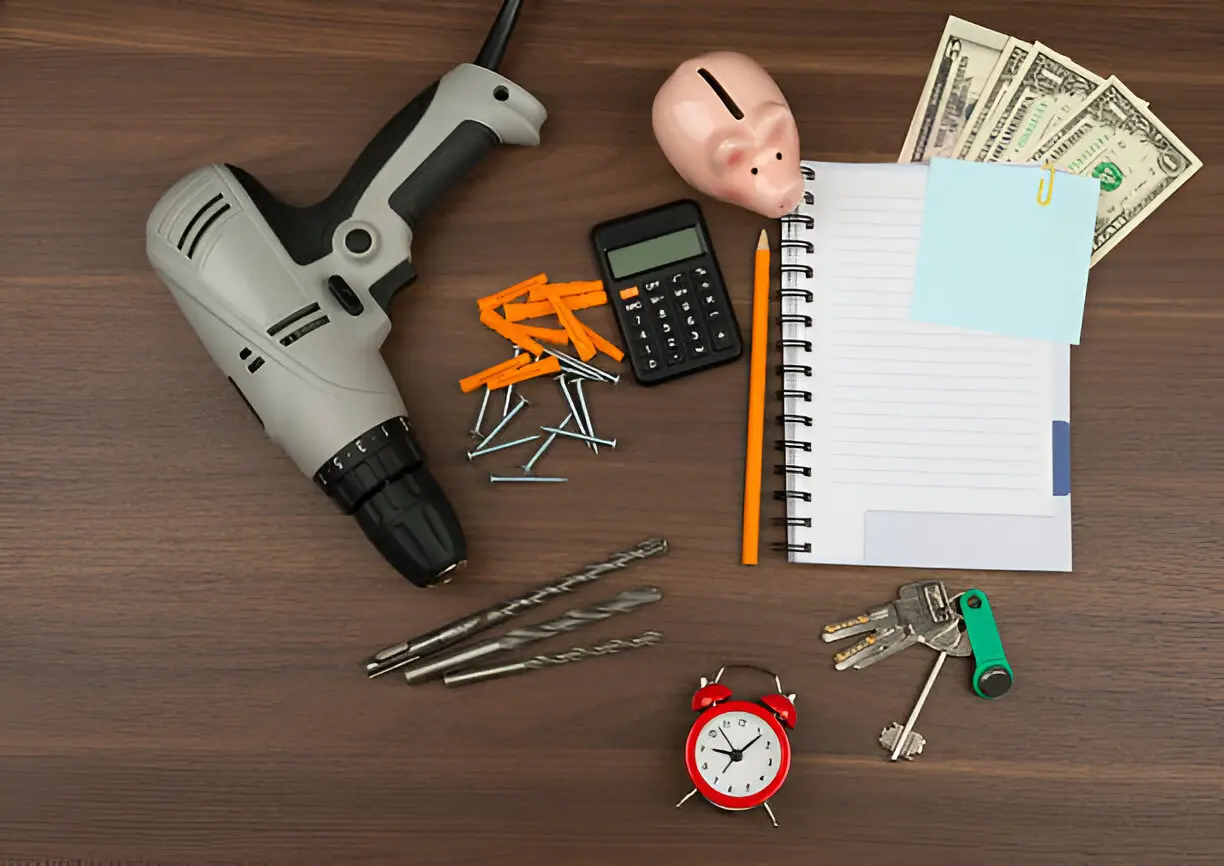Why Tackle Home Improvements on a Budget?
Renovating on a budget is more than a trend—it’s a practical response to rising material and labor costs nationwide. Today, homeowners seek ways to refresh or upgrade their living spaces without draining their savings accounts. It’s no surprise that more and more people are looking for practical tactics as interest in home improvement grows. According to recent news on home improvement spending, consumers invest unprecedented amounts into their homes, even as inflation pushes costs up. These pressures have forced many to seek savings through thoughtful planning and deal-hunting. For those wanting to give their space a facelift on a dime, hunting for a Lowe’s promo code can make a big difference, helping save on everything from small DIY kits to larger renovation supplies.
Stretching a renovation budget is more than pinching pennies; it’s about creativity, discipline, and prioritization. As the popularity of home projects soars, there’s no shame in wanting to get the most for your money. Simple changes—like painting, switching out hardware, or rearranging furniture—can breathe new life into familiar rooms. By blending an innovative approach to spending with a willingness to do a little work yourself, anyone can create a bigger impact, regardless of budget size.
Setting Realistic Goals for Your Space
Knowing where to start is the secret to successful home improvement on a budget. Before jumping into demolition or shopping sprees, you must evaluate your space carefully and identify pain points—what bothers you every day? Does the paint look faded, is storage too limited, or do outdated fixtures make the room feel drab? Make a list ranked by what will give you the most day-to-day satisfaction or solve a genuine problem.
Not every upgrade needs to be grand or expensive. Sometimes, the most impactful changes are the simplest ones. Swapping out builder-grade light switches for stylish versions, adding floating shelves, or simply decluttering can change a room’s overall look and feel. Focusing on small victories motivates you and ensures your to-do list isn’t overwhelming. By aiming for improvements that balance aesthetics and function, you get the best value for your efforts.
Planning for Cost-Effective Results
Every successful renovation project starts with a clear, realistic budget. Instead of estimating costs on the fly, break your budget into specific categories: supplies, tools (buy or rent), professional help if required, and a contingency fund for any hiccups. This meticulous approach prevents surprise expenses from derailing your plans. There are plenty of free templates and budget apps designed for home renovations that can help you stay on track and accountable.
Research plays a significant role in budget-friendly renovations. Take your time to compare prices at different retailers, especially for big-ticket items. Customer reviews are invaluable for uncovering the true quality of materials or products before you buy. Reaching out to friends, family, or your local online community for recommendations can also lead to extra savings or tips you might have missed. Ultimately, good planning can dramatically reduce both total spend and project stress.
Savvy Shopping and Finding Deals
Knowing when and where to shop is as essential as knowing what to buy. Throughout the year, retailers offer deep discounts tied to seasons, holidays, and inventory clearances—think Memorial Day, Labor Day, or Black Friday. Seasoned renovators even plan projects around these periods to maximize savings. Signing up for retailer newsletters, downloading apps, or following them on social media can provide early notice of flash sales or members-only deals.
- Set alerts for annual sales on items like power tools, paints, and flooring.
- Shop during off-peak times, such as late winter or summer, for greater discounts.
- Look for digital or print coupons before making any purchase.
Comparing prices online and offline, checking for rebates, and searching for coupon codes are great strategies for finding additional savings. Sometimes, combining a store sale with an online discount code can bring products within your budget that might otherwise be out of reach.
Easy DIY Upgrades Almost Anyone Can Do
Many home improvements are easier than you think, even for those without much DIY experience. Tasks such as painting walls, caulking windows, changing light fixtures, or installing shelves can usually be completed in a few hours or less. According to DIY home improvements news, interest in approachable, confidence-boosting projects is rising fast, especially as homeowners find creative ways to personalize their spaces.
The internet is a treasure trove of how-to guides, videos, and step-by-step walkthroughs for standard upgrades. First-timers can tap into these resources and learn safe, effective techniques before starting. Painting a door, installing peel-and-stick backsplash, or hanging art or mirrors at eye level are manageable tasks that can bring a fresh sense of accomplishment. If you run into a tough challenge, ask a knowledgeable friend to join in or consider calling in a pro for specialized work like electrical or plumbing.
Prioritizing Projects With the Best ROI
Return on investment (ROI) should be a top consideration when selecting which upgrades to focus on. Some projects offer higher resale value and immediate perks than others. For instance, according to data from national real estate associations, replacing an old front door or garage door, freshening up landscaping, or updating kitchen hardware can pay off handsomely when it comes time to sell. Quick fixes like swapping outdated sink faucets or installing new window treatments can boost comfort without blowing the budget.
- Boost curb appeal with inexpensive front porch upgrades—think pots of flowers or new house numbers.
- Install energy-efficient lighting or a programmable thermostat for long-term utility savings.
- Try water-saving bathroom fixtures for both ecological and financial benefits.
Picking projects with an eye toward ROI ensures that each dollar invested doesn’t just update your space, but adds ongoing value by reducing bills or appealing to future buyers should you decide to move.
Leveraging Seasonal Sales and Coupons
Timing your purchases around store sales is a powerful tactic. The most significant discounts typically happen during major holiday weekends, the end of seasons, and annual clearance events. By keeping a running wish list for your home, you can snap up bargains as soon as discounts become available, especially on larger items like appliances or flooring.
Online deal trackers, browser coupon extensions, and cashback sites can also stack the savings. Subscribing to newsletters or setting reminders in your calendar for sale dates means you’ll never miss out on a bargain. In many cases, a well-timed purchase with a coupon can slash prices dramatically, freeing up cash for another project on your list.
Staying Motivated and Avoiding Common Pitfalls
Home improvement can feel daunting, especially when time or money is short. To prevent burnout, break big projects into small, achievable goals so that every win keeps you moving forward. Whether you’re finally installing that shelf you’ve been putting off or reorganizing your linen closet, celebrating progress is essential.
Be careful not to lose sight of your budget. It’s easy to go overboard as excitement builds or trends catch your eye. Routinely check your spending, save receipts, and reevaluate priorities if costs creep up. A running photo diary of your progress keeps spirits high, and marvelously far your space has come.
Innovative Ways to Reuse and Repurpose
Sustainability and savings often go hand in hand. Instead of heading straight for new purchases, get creative by repurposing old items in fresh ways. Old dressers can become bathroom vanities, while weathered doors might be reborn as unique headboards. Paint, hardware, and textiles can all be upcycled or moved from room to room for a dramatic impact at no cost.
- Paint mismatched chairs a uniform color for a fun dining set makeover.
- Repurpose glass jars for garage or craft room organization.
- Exchange décor with friends or family for a “new to you” refresh.
Repurposing isn’t just eco-friendly; it’s a playful, personal approach to making your spaces your own.
Putting Your Plans Into Action
Ready to transform your home? Begin by choosing a single, manageable project from your list—ideally something that brings immediate satisfaction and is achievable in a weekend. Gather all tools and materials beforehand to prevent unnecessary delays. Make a checklist for every step, from prep to cleanup, and stick to your game plan.
Snap a “before” photo, then get started! Each completed project, no matter the size, inspires new confidence and motivation for the next one. With preparation, a little creativity, and smart shopping strategies, even homeowners on the tightest budgets can achieve beautiful, functional results. The journey might require planning and patience, but the satisfaction of a home improved—without an empty wallet—is well worth it.
Also Read-Designing a Home for a Large Family








